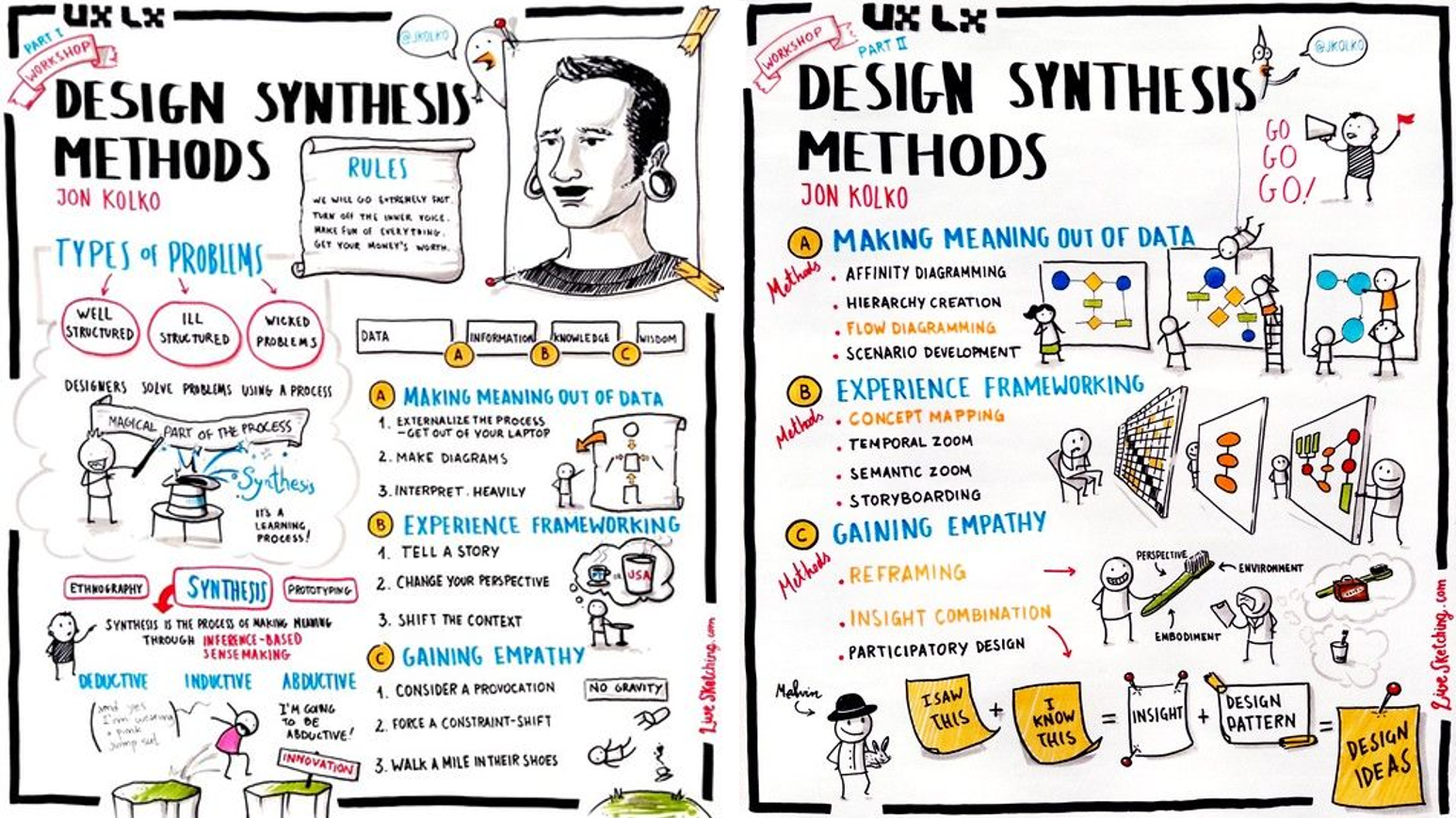“A two-hour research session will generate more than a hundred discrete utterances, and so research with 10 participants will create a thousand pieces of data. By marinating in this data—literally embedding and immersing yourself in a war room of quotes, pictures, artifacts, and ideas—you will start to form connections that are otherwise hidden. You'll identify behavioural anomalies that fit outside your worldview. And by constantly asking and answering the question "Why?", you will arrive at the "big rocks" of innovation: statements about the future to hang your design hat on.”
- - - - -
It’s Christmas day and I’m sat with my family around the festive dinner table. We’ve pulled the crackers and are reading the jokes when my 3yr old son asks: “what are these?”. He had picked up a mini book of sticky notes which had been a prize in one of the crackers. “Oooo, give those to your dad” laughed my brother “he loves them”. My brother, a Graphic Designer, was not for the first time I might add, poking light-hearted fun at the prolific use of sticky notes in Service Design. He’s got me bang to rights of course, we do tend to use quite a lot of sticky notes in our work. Look at the images on any Service Design website and you are sure to find several which show groups of people staring at a wall of sticky notes. But this isn't a frivolous action, it’s actually a key part of the design process, and sticky notes are an ideal tool for the job.
During the discovery stage of the design process, for example, we gather a huge amount of data. During customer interviews and workshops there are a lot of things said or observed that need to be written down and made sense of later. When it comes to making sense of that data, sticky notes are ideal. Once you've written on them you can aggregate and sort them pretty much endlessly into different groups, allowing you to uncover patterns that would have been really hard, if not impossible to see by looking at each piece of research in isolation.
At the beginning of December, we finished our first set of customer interviews for a piece of work we are doing to help us better understand what ‘home’ means to people. We spent around 10 hours in one-to-one conversations with 10 customers and we had lots to sort through. We needed to synthesise a set of insights from the conversations we had had. Using sticky notes to help us turn the 'raw data' into 'meaningful information' made the whole process of Design Synthesis a whole lot easier.
I’d done sticky note sorting many times before I was first introduced to the term ‘Design Synthesis’. I attended a workshop run by Jon Kolko at the Service Design Global Conference back in 2013 where he explained the key principles. It’s a rigorous process, but what I took from it was the importance of moving from data to information to knowledge to wisdom. Jon's workshop also introduced me to the concept of coding the sticky notes during synthesis, which lead me to develop my thinking around the ‘golden threads’ which I described in another recent post.
Image credit: livesketching.com
At the end of our sense-making session just before Christmas, we had grouped the data from our 10 customer interviews into 6 high-level themes, but to make better sense of the themes and understand the stories behind them, we needed to dive deeper into them. As this was the last day we could all be in the same place at the same time, we had a bit of a problem. How could we carry on working with the sticky notes from different locations? We needed to further refine our themes and create some sub-themes or categories in order to take us to a position from where we could draw everything up into the ‘big rocks’ of our future work.
Michelle hit on an idea, why couldn't we use Trello? We could set out our themes using lists, and then represent each sticky note as a seperate card. We could use labels to group the cards into categories and move them around on the lits. Because we had tagged each card with the interview number, we could also keep the Trello board as an audit trail - our golden thread. Following a couple of Skype conversations over the course of the next day or so we managed to complete the work as a distributed team, and on reflection, using Trello was a really good way of doing it.
We are currently in the process of writing up the narrative and building a story around what we discovered, which will allow us to make the next transition from information to knowledge. I’ll be posting an update soon.
Happy New Year!
---


